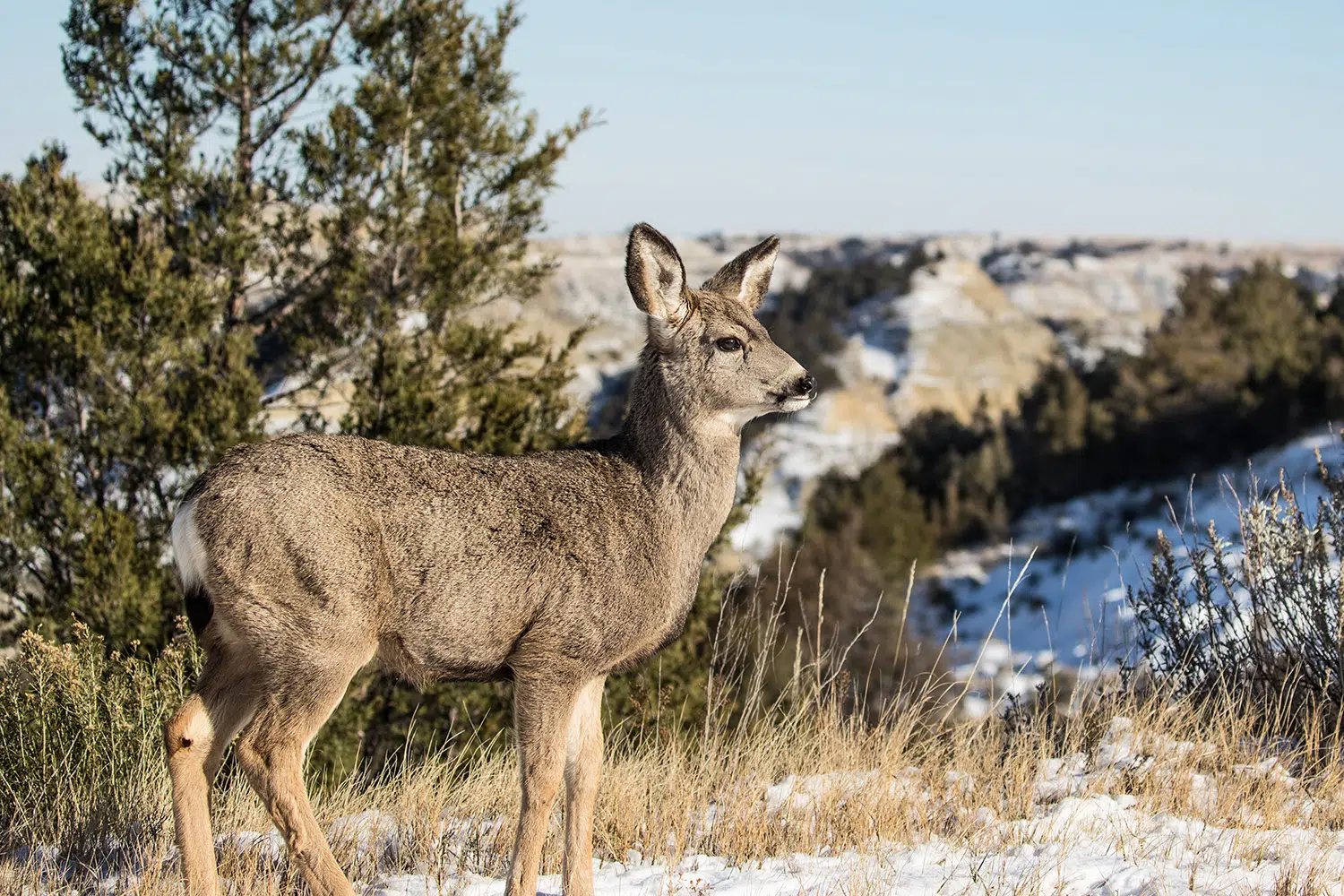
Mule Deer in Theodore Roosevelt National Park, North Unit, Nov. 7, 2017
The North Dakota Game and Fish Department completed its annual mule deer survey, and results indicate western North Dakota’s mule deer population is 29% lower than last year and 5% below the long-term average.
Biologists counted 1,994 mule deer in 286.3 square miles during this year’s survey. The overall mule deer density in the badlands was 7.0 deer per square mile.
Big game management supervisor Bruce Stillings said declines are due to effects from extreme winter conditions this year and historic blizzards from the previous spring that produced approximately 40 inches of snow with high winds and low temperatures.
Biologists had concerns with mule deer numbers heading into this winter based on results from the fall survey. The fall survey is conducted to assess demographics of mule deer in the badlands. Buck:doe ratio and fawn production expressed as fawn:doe ratio are determined to evaluate population status and productivity of mule deer.
Biologists counted 1,116 mule deer in the aerial survey in October, which was 31% lower than in 2021. The ratio of 69 fawns per 100 does was higher than 2021 (60/100) but well below the long-term average (87/100), while 40 bucks per 100 does was similar to 2021 (38/100) and the long-term (43/100).
The spring mule deer survey is used to assess mule deer abundance in the badlands. It is conducted after snow melt and before trees begin to leaf out, providing the best conditions for aerial observation of deer. Biologists have completed aerial surveys of the same 24 study areas since the 1950s.
The fall aerial survey, conducted specifically to study demographics, covers 24 study areas and 306.3 square miles in western North Dakota. Biologists also survey the same study areas in spring of each year to determine deer abundance.




Comments